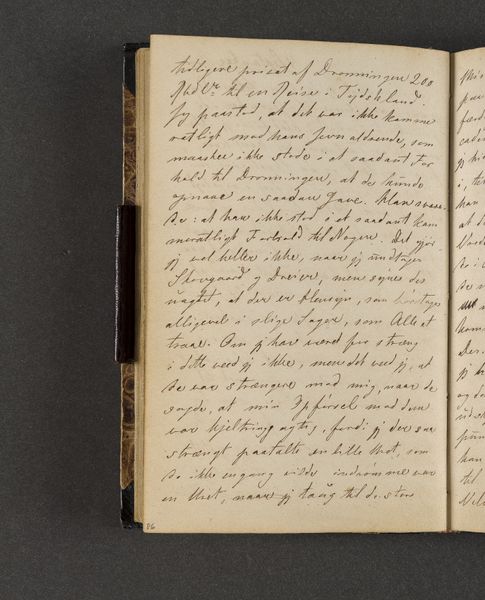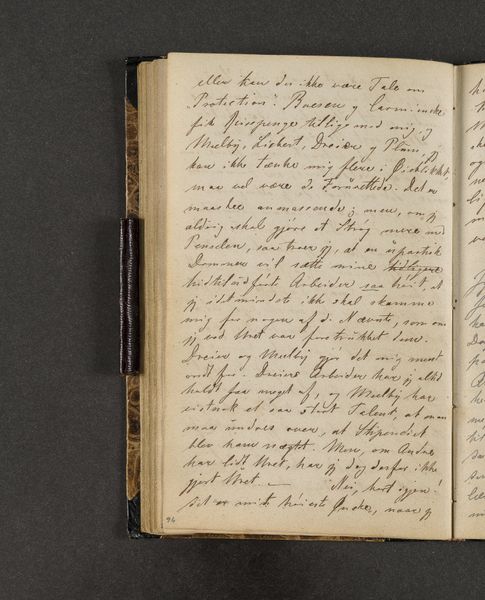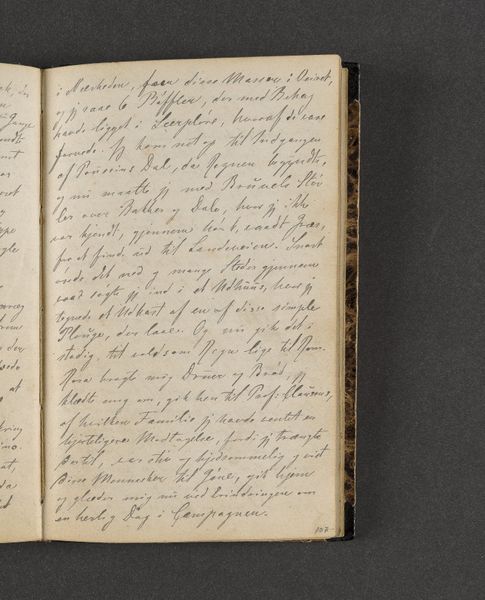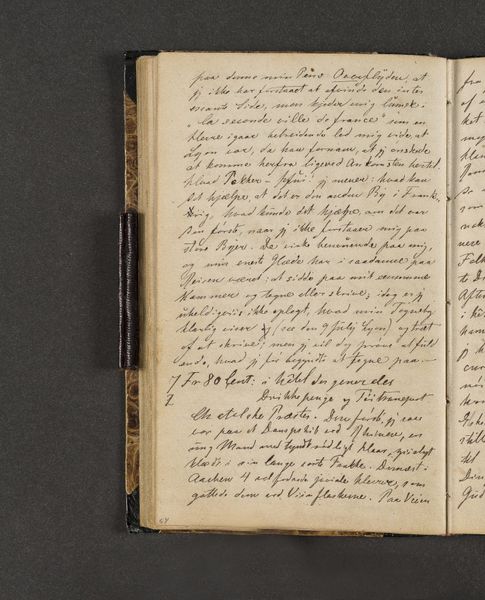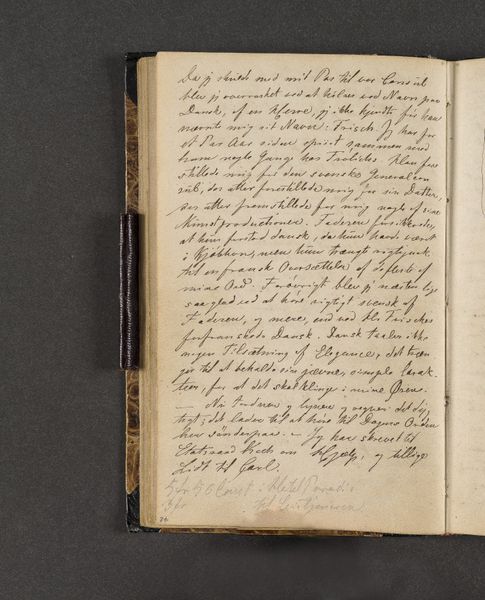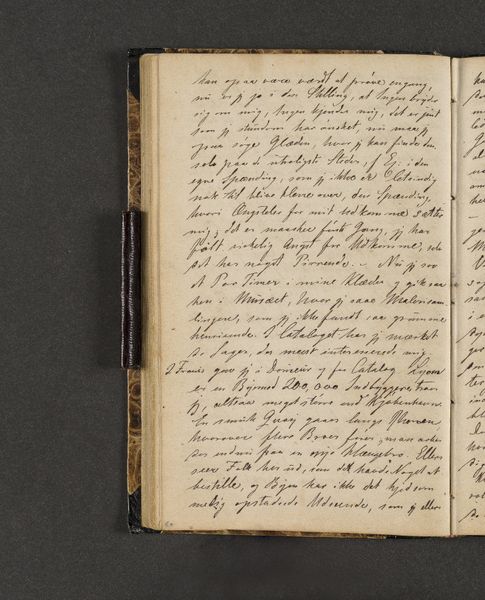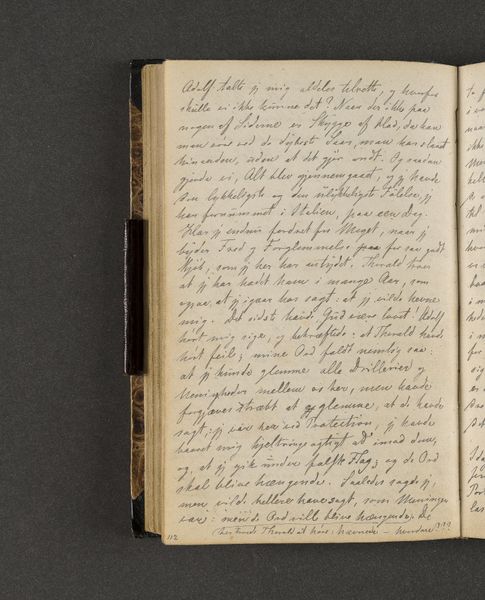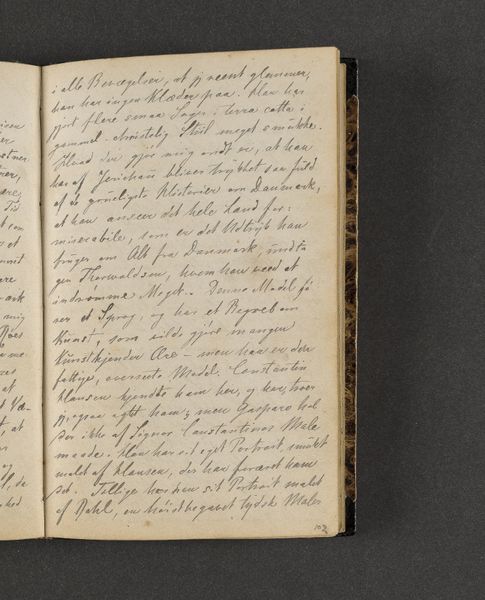
drawing, paper
#
portrait
#
drawing
#
paper
#
romanticism
Dimensions: 161 mm (height) x 103 mm (width) x 11 mm (depth) (monteringsmaal)
Curator: Today we’re looking at Johan Thomas Lundbye’s "Rejsedagbog," dating back to 1845, which is currently held at the SMK, the Statens Museum for Kunst. It’s a peek into the artist’s travel diary. Editor: It appears to be a notebook page filled with elegant handwriting; the physical texture of the aged paper seems palpable, somehow intimate. You immediately wonder what's written. Curator: Exactly! What strikes me is the sheer accessibility of this artifact. Lundbye’s diary gives insight into the world through his experiences. The book is held open to a page in the journal that's a wonderful contrast between the meticulously bound exterior, compared to the freedom and fluidity of the internal handwriting. Considering his larger body of work of primarily natural landscapes, this feels really different. What is so special here is the ability to see Lundbye's thought processes recorded on paper. It feels unedited, even pure. Editor: Yes, but let’s consider the raw materials. It’s simply ink on paper, mass-produced even back then, and yet, when touched by an artist, the combination produces an object capable of conveying so much more. It really questions the function and status of mundane bookmaking to hold these entries, while acting like some kind of Romantic vessel. Curator: Agreed, and beyond the materials, the diary format provides insight into the period of romanticism. Here the diary form serves to democratize access to artistic experience. His private experience is opened up to the public in museums or archives that hold and exhibit these kinds of material to inspire or give new outlooks. We see not just the artwork he produced for galleries, but the development, the everyday behind-the-scenes stuff of a working artist. Editor: In that case, what truly strikes me is how we are given access to that original work. And yet, even these everyday diaries become historicized through museums, curated displays, and contextualization, don’t you think? They gain cultural and historical capital simply by being placed in such a location, separated from its original everyday conditions, even romanticising this sense of 'genius'. Curator: Yes, which does also show us the layers involved in appreciating art: the initial creation, then later, exhibition, museum practice and of course personal experiences. The layers involved allow us to explore historical practice through social institutions. Editor: I find the materiality deeply impactful too. The weight of that little book held, used, stored… A portal from past-present experiences of looking at art!
Comments
No comments
Be the first to comment and join the conversation on the ultimate creative platform.

